Surface Tension Effect on Air Bubbles under Water Column, Ansys Fluent Training
$120.00 $60.00 Student Discount
In this project, the effect of surface tension on air bubbles under a water column has been simulated and the results have been investigated.
Click on Add To Cart and obtain the Geometry file, Mesh file, and a Comprehensive ANSYS Fluent Training Video.To Order Your Project or benefit from a CFD consultation, contact our experts via email (info@mr-cfd.com), online support tab, or WhatsApp at +44 7443 197273.
There are some Free Products to check our service quality.
If you want the training video in another language instead of English, ask it via info@mr-cfd.com after you buy the product.
Description
Surface Tension Effect Project Description
In this project, numerical simulations of air bubbles under a water column with two different surface tension have been done using Ansys Fluent software. The VOF model has been used to simulate and solve the two-phase flow field equations. The two modes in this project are simulated and compared.
Geometry&Mesh
The 2D geometry of the present model is generated using SpaceClaim software. The length of the computational area is 20 mm and its height is 25 mm.
The meshing of the present model has been done using Ansys Meshing software. The mesh type is structured in all of the computational domains, and the element number is equal to 200000.
Surface Tension Effect CFD Simulation Settings
- Due to the incompressibility of the flow, the pressure-based solver method has been selected.
- The simulation is transient.
- The gravity effect is considered equal to -9.81 m.s-1on Y-axis
The Laminar viscous model has been used to solve the flow field equations, and the pressure-velocity coupling scheme is SIMPLE. The second-order upwind discretization method has been used for momentum and PRESTO! For the pressure discretization.
The following tables represent a summary of the defining steps of the problem in this project and its solution:
| Models | ||
| Multiphase | ||
| Homogeneous model | Volume of fluid | |
| Number of Eulerian phases | 2(air& water) | |
| Interface modeling | Sharp
Interfacial |
|
| Formulation | explicit | |
| Body force formulation | Implicit body force | |
| Viscous | Laminar | |
| Material Properties | |
| Air | |
| Density | 1.225 |
| viscosity | 1.7894e-05 |
| water-liquid | |
| Density | 998.2 |
| viscosity | 0.001003 |
| Methods | ||
| Pressure-Velocity Coupling | SIMPLE | |
| Pressure | PRESTO! | |
| Momentum | Second-order upwind | |
| Volume fraction | Compressive | |
| Initialization | ||
| Initialization methods | Standard | |
| Patch | Phase | Phase2 |
| Variable | Volume Fraction | |
| Registers to patch | Region_0 | |
| Value | 1 | |
| Run calculation | ||
| Time advancement | Type | adaptive |
| Parameters | ||
| Initial time step size | 0.0001 | |
| Settings | Minimum time step size | 0.0001 |
| Maximum time step size | 0.0001 | |
| Time step size | 10000 | |
Surface Tension Effect Results
According to the shape of the bubbles, it is clearly visible that the amount of surface tension is very effective in the size of the bubbles. The higher the surface tension, the greater the resistance to compressive force from the fluid and the larger the bubbles formed.
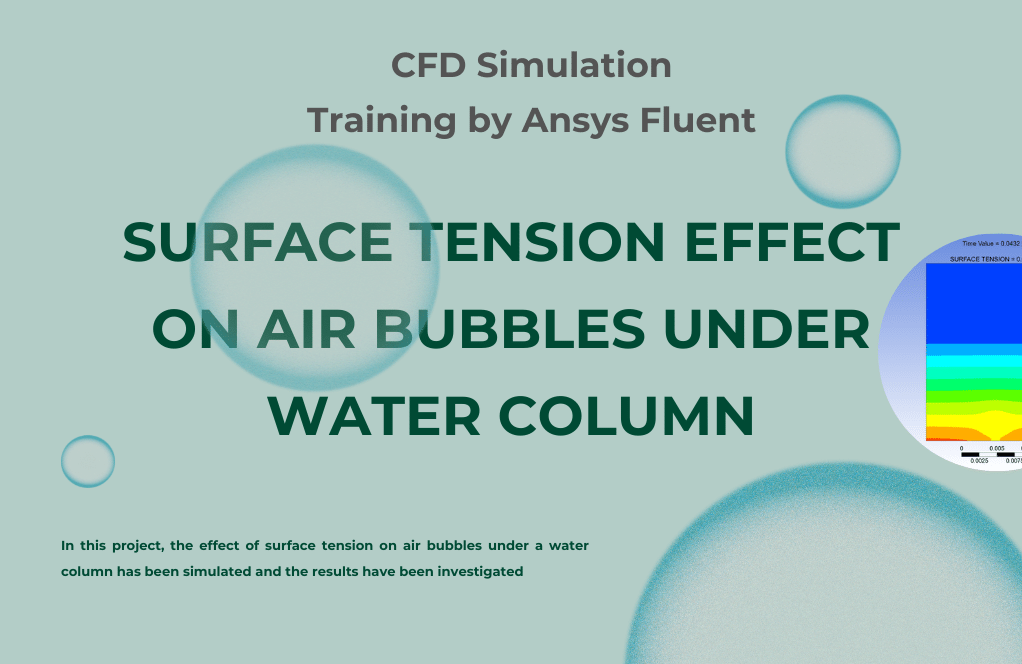
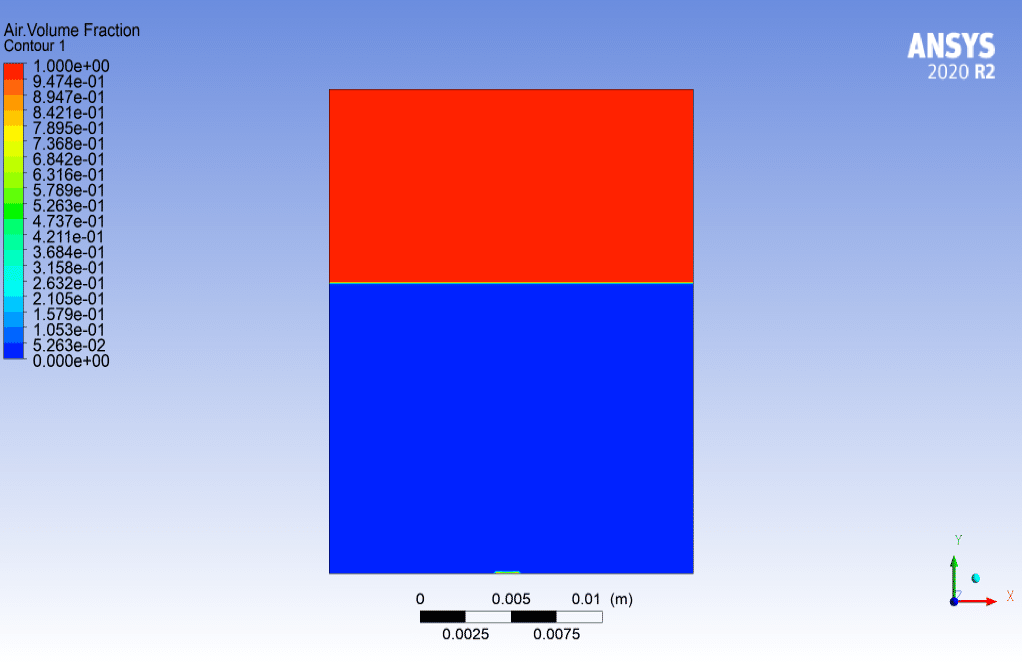
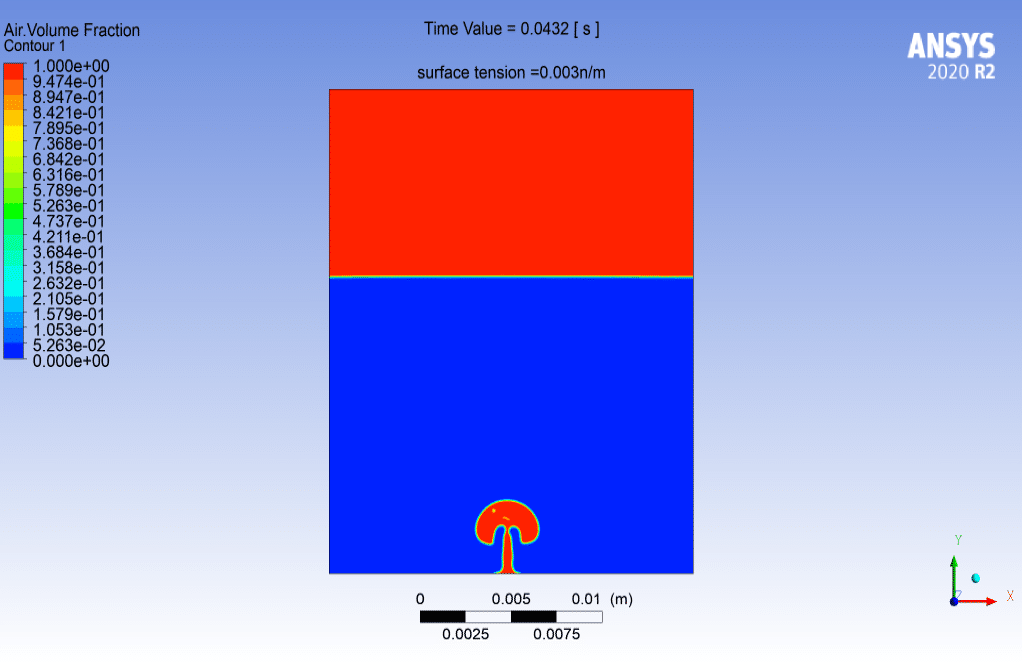
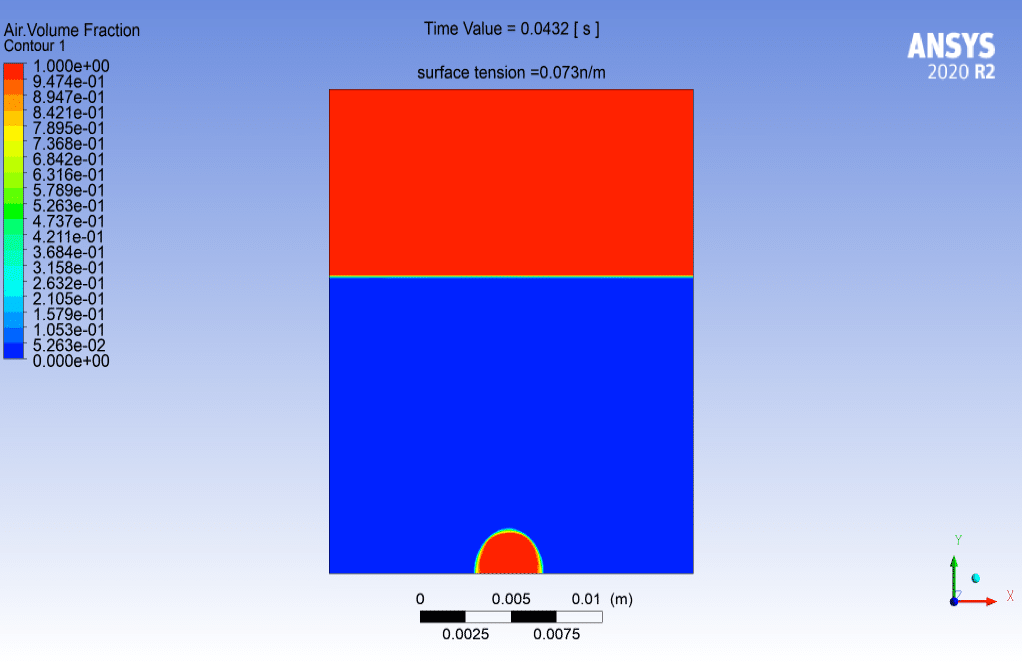

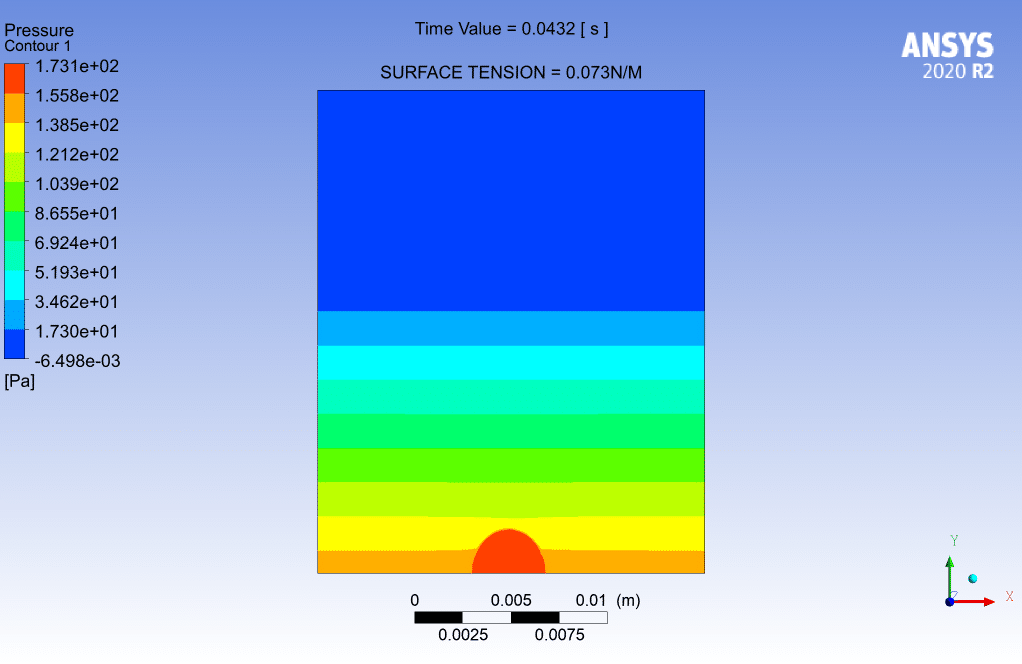
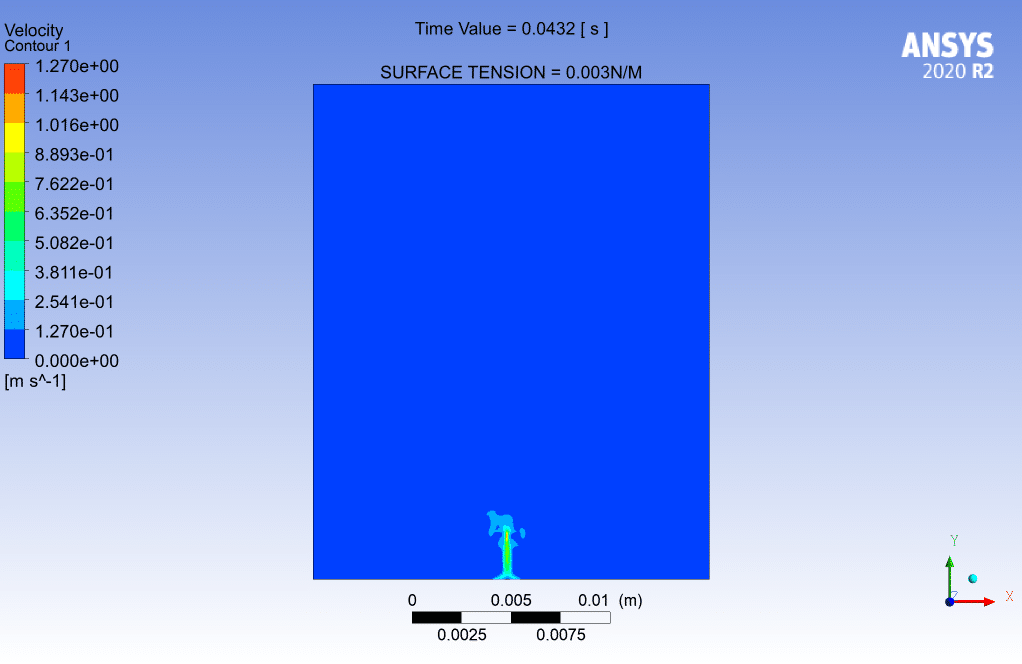
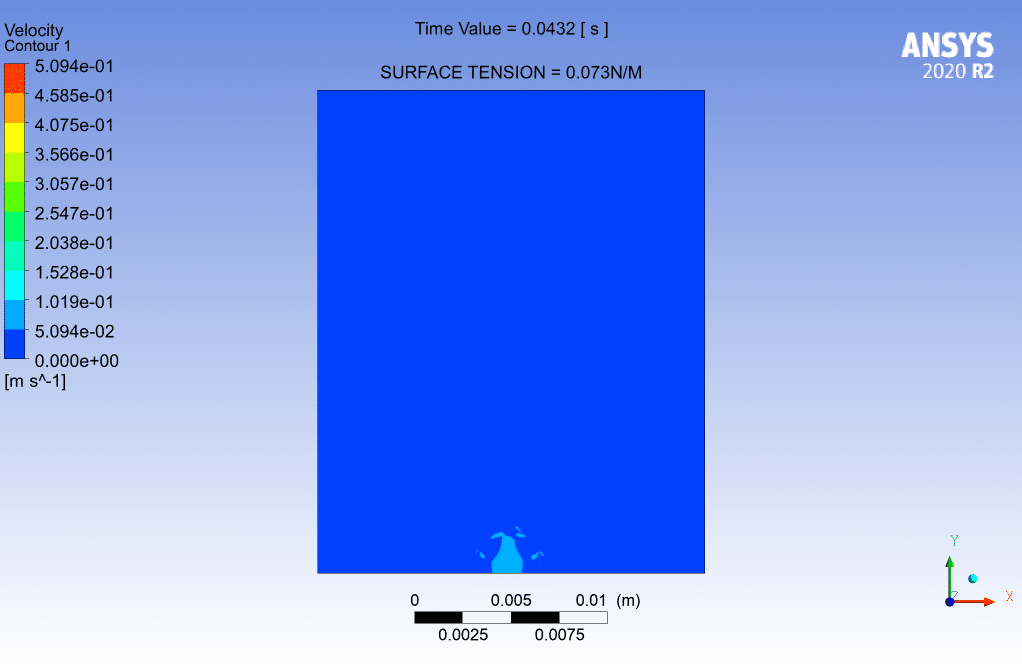
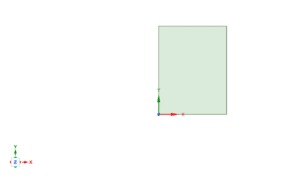
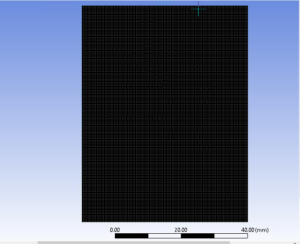
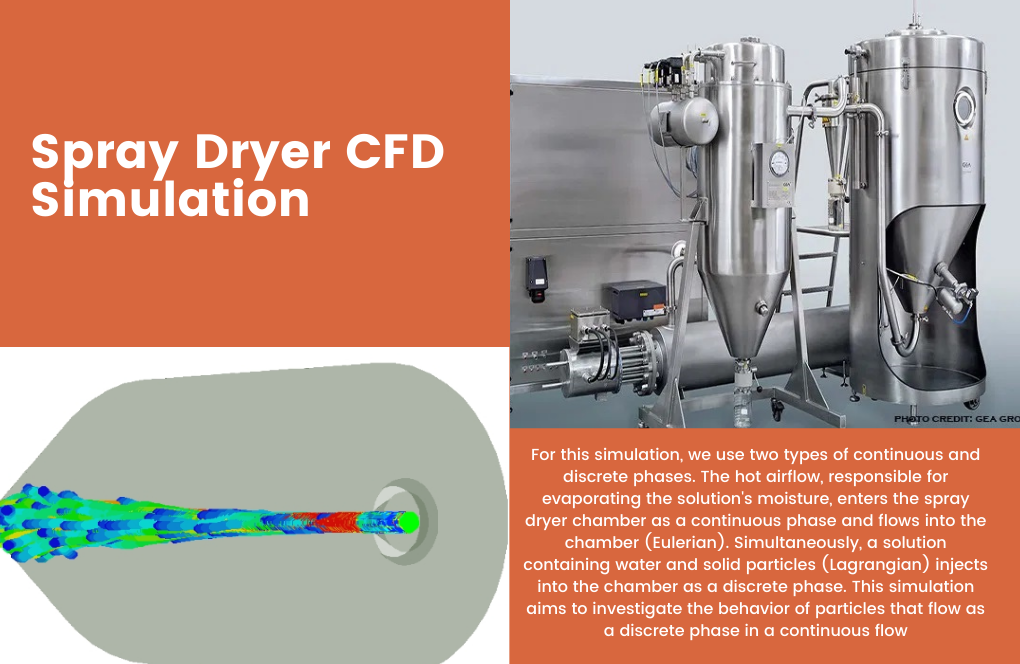



Maurice Predovic –
I am really impressed by how the two different modes of surface tension were compared in this study. Seeing the impact of surface tension on the air bubbles’ size was quite intriguing. Very useful for understanding multiphase flow patterns. Well done on the simulations and clear presentation of results!
MR CFD Support –
Thank you for your kind words. We are pleased to hear that you found the comparison of surface tension modes and their effects on air bubble formation under a water column informative and interesting. It is always our aim to provide clear and comprehensive understanding through our simulations. We appreciate your compliment on the simulation results and the presentation.
Robbie O’Conner PhD –
The simulation set details are incredibly insightful. It’s incredible to see how variations in surface tension can affect bubble formation and behavior!
MR CFD Support –
Thank you for your kind words! We’re glad you found the simulation details impactful. Understanding the surface tension’s role is indeed crucial in multiphase flow simulations and it’s gratifying to know our product could clearly demonstrate this effect for you.
Rosalind Nikolaus –
The explanation is very detailed! The visuals on the bubble formations with varying surface tension provided me with great intuitive understanding. It’s nice to see how computational fluid dynamics can predict such subtle nuances.
MR CFD Support –
Thank you for your positive feedback! It’s wonderful to hear that our product provided you with a clear understanding of the dynamics involved in bubble formation under different surface tension conditions. If you have any further interest in our simulations or services, please feel free to reach out.
Abagail Johnson –
This training material sounds comprehensive and practical. The detailed explanation of numerical settings and project description showcases the depth of research and effort put into the study of air bubbles under varying surface tension conditions. The incorporation of CLEAR explanations about geometry, mesh, and simulation settings, as well as the impact of surface tension results is impressive.
MR CFD Support –
Thank you for your positive feedback! We’re thrilled to hear that our Surface Tension Effect project was helpful and met your expectations. We always strive to provide detailed and clear explanations to assist in understanding complex concepts. If you have any further questions or need more information about our products, feel free to reach out.
Ryder Reinger –
I am really impressed with the level of detail and the quality of the results this simulation provided. Watching the effect of surface tension on the bubbles closely has been truly fascinating, and I’ve learned quite a bit from this training.
MR CFD Support –
Thank you for your positive feedback! We’re thrilled to know you’ve found the Surface Tension Effect on Air Bubbles under Water Column training informative and beneficial. If you have any further questions or curiosity about CFD simulations, we’re always here to help!
Electa Gerhold –
I am truly fascinated by how surface tension influences bubble formation. Outstanding presentation of simulation results and settings. The detailed explanation of factors like meshing, solver settings, and the impact of different surface tensions was particularly enlightening.
MR CFD Support –
Thank you for your positive feedback! It’s great to hear that you appreciate the effort put into detailing the simulation process and its outcomes. Understanding the intricate effects of surface tension on bubble dynamics is crucial for various applications, and we’re glad our simulation could shed light on these phenomena for you.
Harmony Brekke –
I’m impressed with the details in this simulation study on the surface tension effect on air bubbles. It demonstrates the comprehensive analysis possible with Ansys Fluent. Could you please provide some insights on how varying surface tension in the simulation affects the final shape and dynamics of the air bubbles?
MR CFD Support –
Thank you for your positive feedback! In the simulation of the surface tension effect on air bubbles under a water column, varying the surface tension alters the intermolecular forces at the interface between the air and water. A higher surface tension will result in stronger cohesive forces, resisting deformation and making bubbles more spherical and more stable. Conversely, lower surface tension reduces these forces, allowing bubbles to easily deform and potentially merge. The accurate capture of these dynamics showcases the versatility of Ansys Fluent in modeling complex fluid phenomena.
Mrs. Yesenia Bailey Jr. –
What a fantastic resource for understanding fluid dynamics concerning surface tension effects! This simulation really helped visualize how changes in the surface tension influence the behavior of air bubbles under different conditions. The detailed mesh structure and the clear explanations of the parameters used provided a thorough comprehension of the setup.
MR CFD Support –
Thank you for your positive feedback! We are delighted to hear our Ansys Fluent training for surface tension effects on air bubbles under a water column has aided in your understanding of fluid dynamics. Your acknowledgment of the mesh structure and simulation parameters is much appreciated!
Dr. Kaitlyn Kuphal –
I found the project description fascinating, especially how the surface tension effects are simulated. Could you please explain a little deeper how the change in surface tension values between simulations impacts the formation and behavior of the air bubbles?
MR CFD Support –
Absolutely! The surface tension in a simulation represents the cohesive force at the interface between two fluids—in this case, air and water. When surface tension values are changed, it directly impacts the interfacial tension between the air bubbles and the surrounding water. A higher surface tension value will result in stronger interfacial forces, which tends to create larger, more spherical bubbles that resist deformation because the interface acts like a stretched elastic membrane. Conversely, a lower surface tension value means weaker cohesive forces at the interface, allowing easier deformation of bubbles and typically resulting in smaller, less spherical shapes. These effects are critically important in providing accurate simulations for systems where bubble formation, detachment, and rise patterns are key concerns, such as in chemical reactors or gas-liquid separation processes.
Prof. Madeline Ortiz –
The training materials were very informative and comprehensive. I managed to follow the simulation and understand the impact of surface tension on the air bubbles formation. Everything was explained clearly and the visuals were helpful in grasping the concepts.
MR CFD Support –
Thank you for taking the time to provide your positive feedback. We’re delighted to hear that the training materials were clear, helpful, and informative. Understanding the role of surface tension in fluid dynamics is a complex topic, and we are pleased to know our simulations and explanations made it accessible for you.
Ms. Esperanza Rogahn –
The project insight seems really intricate. Did you encounter any particular challenges when setting up the VOF model for this simulation? And what measures did you take to ensure accurate tracking of the air-water interface, with specific reference to the bubble formations?
MR CFD Support –
We paid close attention to the mesh resolution and quality, since accurately capturing the air-water interface is one of the most challenging aspects of multiphase flow simulation using the VOF model. The mesh was refined around the expected regions of interface changes to enhance the resolution of bubble formations. For accurate tracking, we used the Compressive scheme for volume fraction calculations to minimize numerically diffused interface regions. Moreover, the explicit scheme was chosen for interfacial formulation to more accurately depict sharp interfaces typical of surface tension-dominated flows.
Princess Torphy –
I’m quite impressed with the detailed simulation of air bubbles and the effect of surface tension under a water column. It seems like this training provided comprehensive insight into the complexities of bubble dynamics.
MR CFD Support –
Thank you for your positive feedback! We’re glad to hear that the training on the Surface Tension Effect on Air Bubbles under a Water Column using Ansys Fluent was able to provide you with a thorough understanding of the subject. It’s always our goal to deliver comprehensive and practical knowledge to our customers. Your appreciation truly means a lot to us!
Selena Ondricka MD –
This was an excellent introduction to the complexities of two-phase flow and the effects of surface tension on bubble formation. The use of the VOF model along with high detailing in the structured mesh sets a concrete foundation for understanding fluid dynamics in such scenarios. The methodology in handling the discretization and initialization proves the course’s thoroughness. An enjoyable educational experience with clear outcomes demonstrated!
MR CFD Support –
Thank you for your thoughtful review and kind words! We are pleased to hear that you found the training course on Surface Tension Effect on Air Bubbles under a Water Column using Ansys Fluent informative and well-structured. We always strive to deliver comprehensive educational content and are glad that you appreciated the careful attention to detail in the simulation settings and methodology. If you need any further training or support, please do not hesitate to contact us.
Audreanne Hermann –
I was extremely impressed by the visuals presented in the results section, showing how different surface tension levels impact the size of air bubbles. The detail made it really easy to understand the concept!
MR CFD Support –
Thank you for your kind words. We’re pleased to know that our effort to provide a visual explanation helped in understanding the complex interactions of surface tension on bubble formation. If there’s more you wish to explore or learn, feel free to reach out to us!
Prof. Hobart Bogisich –
I was impressed by the amount of detail the simulation could capture! The visual contrast between the air and water due to the surface tension effect was really telling. Loved the simulation!
MR CFD Support –
Thank you for your positive feedback! We’re thrilled that you found the detail and accuracy of the Surface Tension Effect simulation both informative and impressive. We strive to provide high-quality simulations, and it’s great to hear that you enjoyed the visualization of the air and water interaction. If you have any further questions or need more information, feel free to reach out.
Ms. Callie Littel III –
I was surprised to see the significant impact of surface tension on the bubble size. Well done on this comprehensive study!
MR CFD Support –
Thank you for your feedback! We’re glad that the simulation results provided clear insights on how surface tension affects bubble behavior in fluids. It’s always rewarding to hear that our customers find value in our products.
Dr. Alisa Cummerata Jr. –
This training helped me understand how bubble size is affected by surface tension. I didn’t realize before how much difference surface tension makes to bubble behaviour in a water column.
MR CFD Support –
Thank you for your positive feedback! We’re glad that our training product has provided valuable insights into the dynamics of bubble behaviour influenced by surface tension. Understanding these details is crucial for complex fluid dynamics applications, and we’re pleased to have helped clarify this concept for you.
Maxwell Wintheiser –
I’ve read that during the simulation settings, the gravity effect is considered on Y-axis -9.81 m.s-1. Can you please clarify if ‘m.s-1’ represents the typical unit for acceleration due to gravity ‘m/s^2’, or is there a typo in the description?
MR CFD Support –
We appreciate your attention to detail. The representation ‘m.s-1’ in the description appears to be a typographical error. It should indeed be ‘m/s^2’ which is the standard unit for acceleration due to gravity. We confirm that the correct gravity setting in the simulation is -9.81 m/s^2 along the Y-axis.